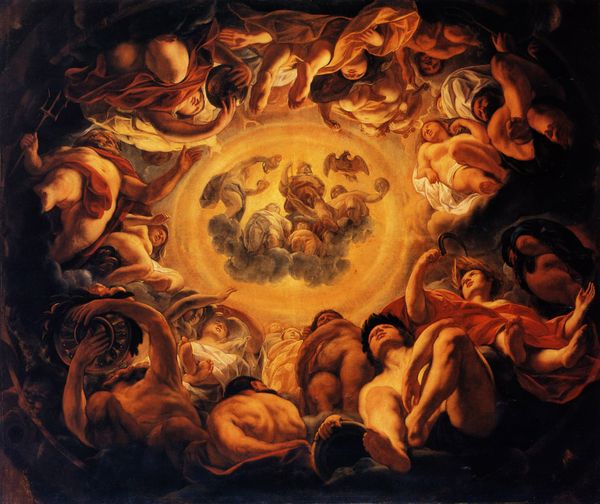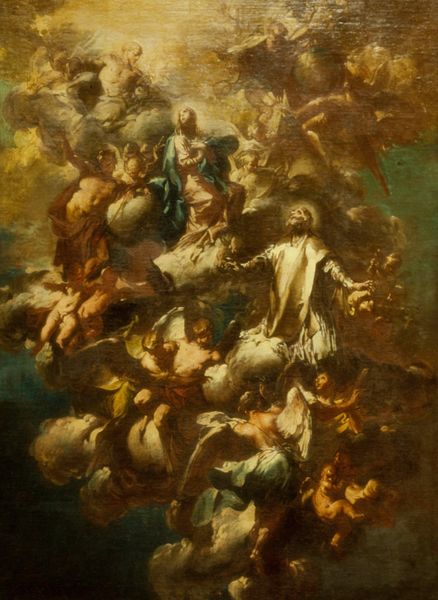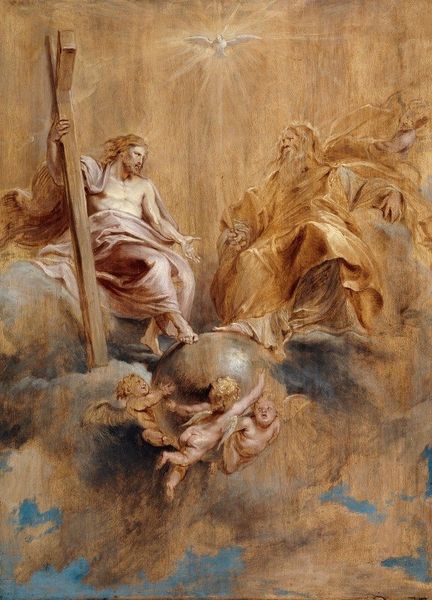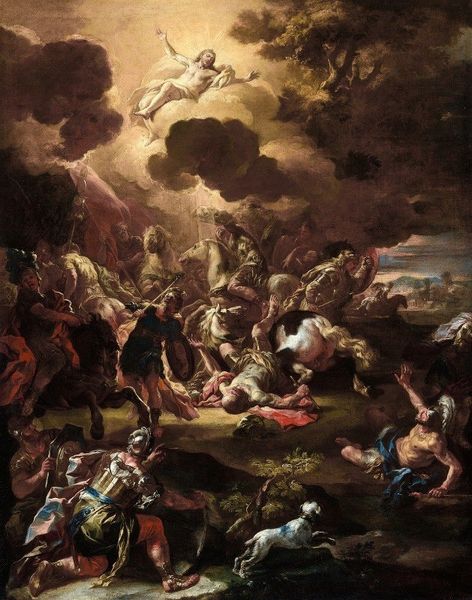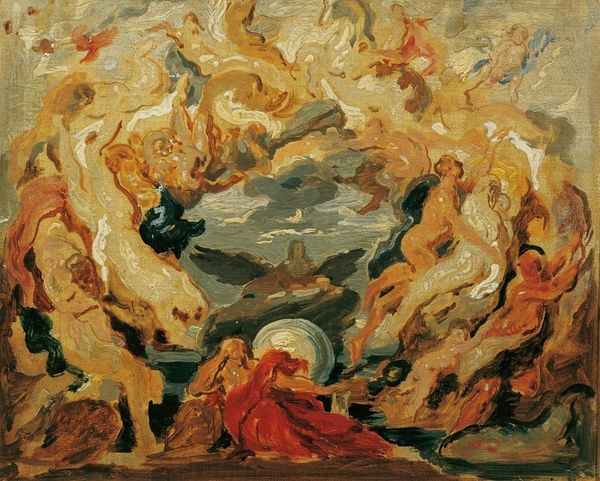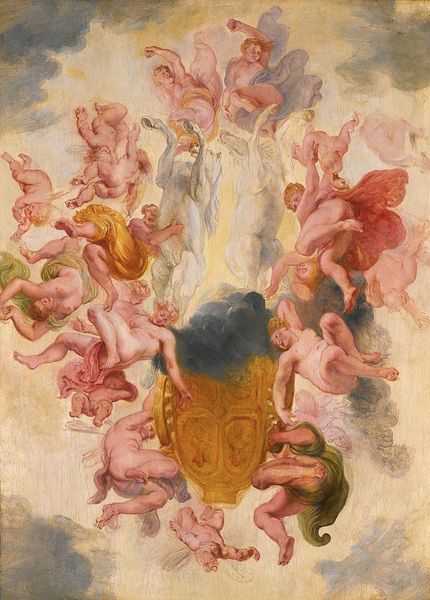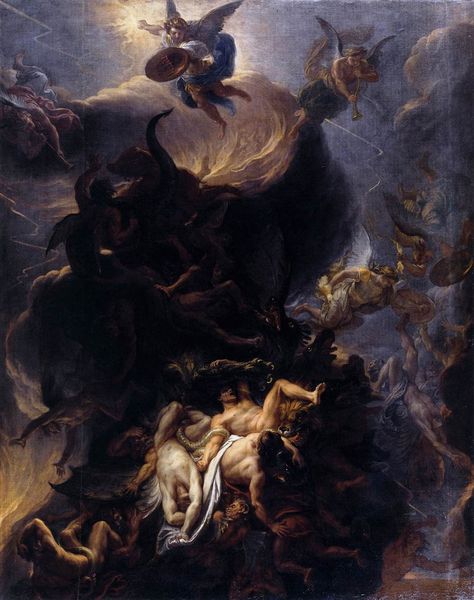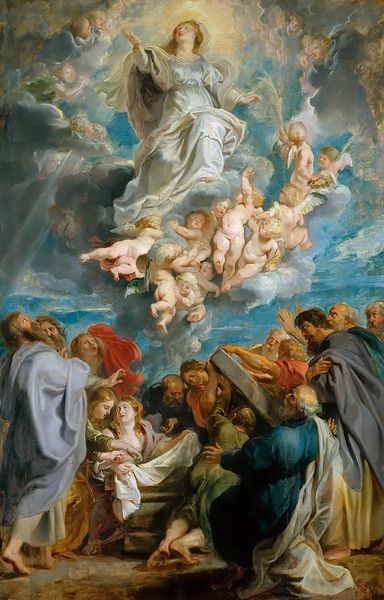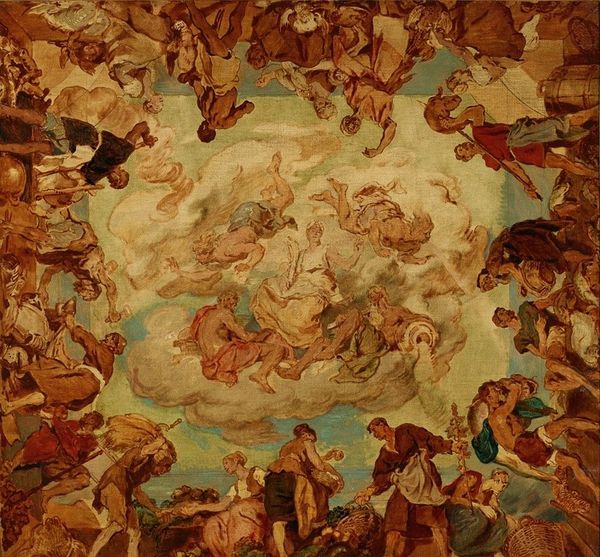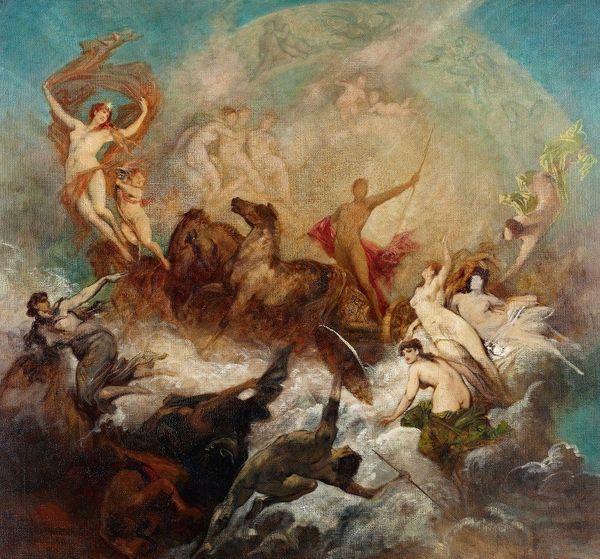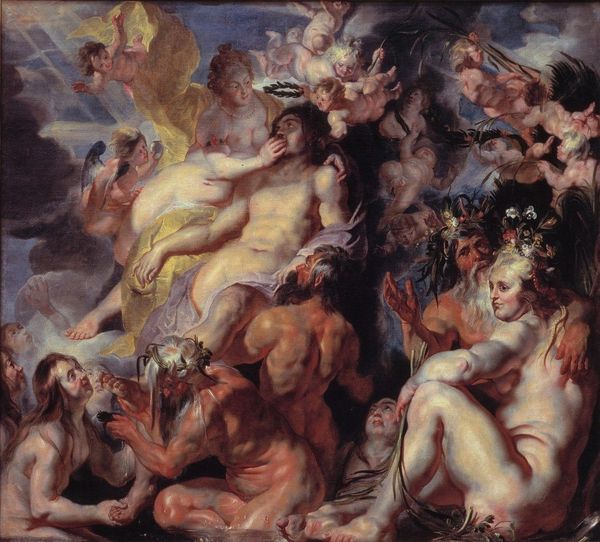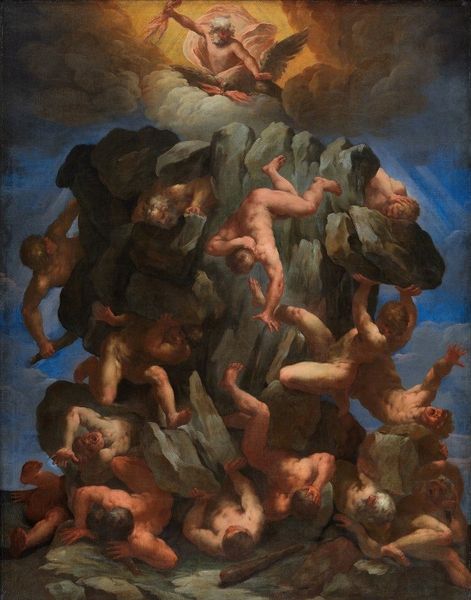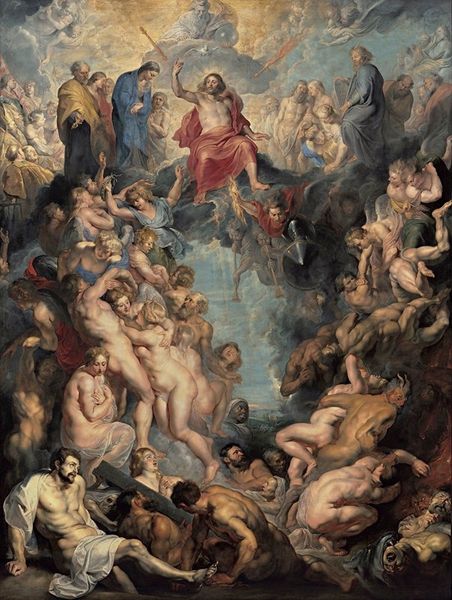
Copyright: Public Domain: Artvee
Editor: This is Hans Thoma's "Cloud of Angels" from 1878, rendered in oil paint. It’s quite whimsical and otherworldly, but the eagle soaring below seems almost menacing in contrast to all those cherubic babies! What do you make of this unusual juxtaposition? Curator: The material reality is really striking. Look at the thick application of oil paint used to render those cherubs. Consider the economic and social context of art production in 1878. Who was commissioning art like this, and for what purpose? Were these idyllic scenes meant to distract from industrial realities? Editor: So you are saying, even a "fluffy" image like this tells us something tangible about the world at the time of its creation? Curator: Precisely. The painting isn't just about some fantasy realm. Think about the availability and cost of oil paints themselves, the studio assistants who might have prepped canvases, or even the prevailing beliefs about childhood and innocence that the artist sought to embody through skillful use of pigment. What does the romantic, pre-industrial style convey, especially in a period undergoing intense industrial change? Editor: That makes a lot of sense. Focusing on the labor involved and the availability of materials, the romantic style emphasizes the difference between a fantasy realm and reality in an industrial time period. Curator: Indeed. Now think, what does the contrast with the bird, a tangible and representational material symbol, do in the work? What is the tension that the eagle presents within this romantic context? Editor: It introduces that earthly or more worldly presence. Almost brings it back down to earth from fantasy. I am intrigued by how considering the context of production reframes the narrative entirely. Curator: Exactly! By understanding its tangible roots, we gain a much deeper appreciation for both its aesthetic appeal and cultural weight.
Comments
No comments
Be the first to comment and join the conversation on the ultimate creative platform.
